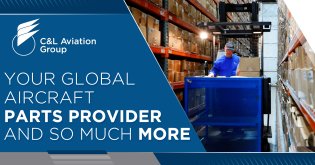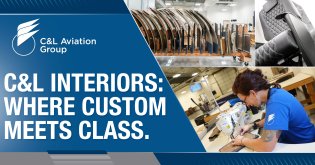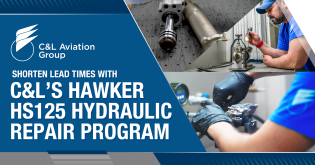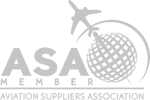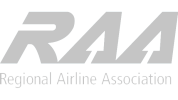Looking for information about the Securaplane sealed lead acid (SLA) battery and how it compares to other SLA and nickel-cadmium (Ni-Cad) batteries? This article focuses on the SLA main ship battery from Securaplane Technologies, a Parker-Meggitt Company, highlighting the battery’s benefits, cost savings, and types of aircraft that support the battery installation.
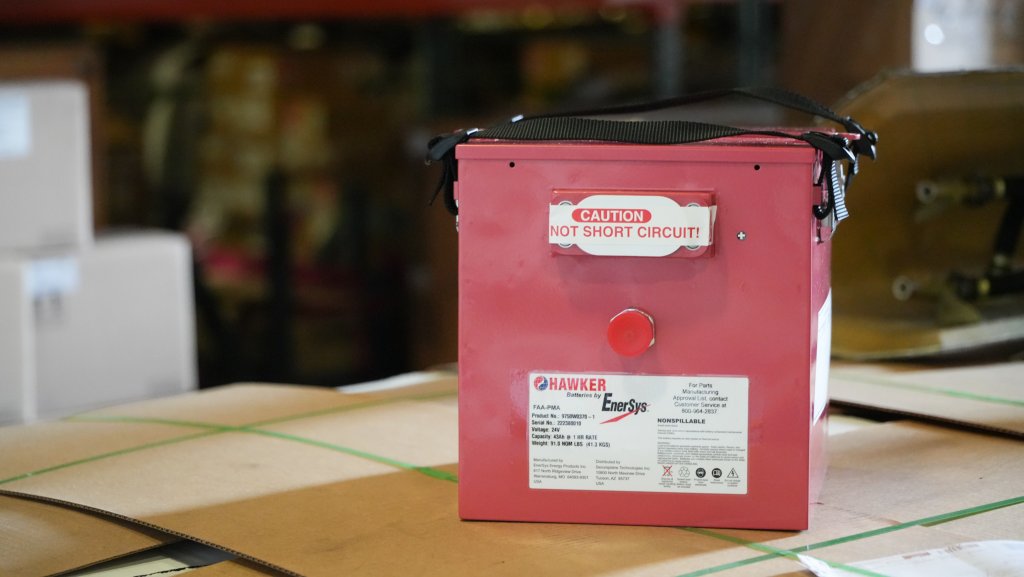
What are Aircraft SLA Batteries?
Sealed Lead Acid batteries (SLA) are best known for being maintenance-free (more on this below) and spill-proof (i.e., acid cannot leak out of the battery cells). These batteries are also known as valve regulated lead acid (VRLA) batteries because they have pressure relief valves that control the battery’s internal pressure. The valves open to release pressure that could build up if the battery is overcharged. Under normal conditions, pressure is minimized due to the internal recombination of hydrogen and oxygen gases formed during the charging process.
The Securaplane SLA main ship battery is 99.99% pure lead rather than a combination of lead and other materials, such as calcium or antimony, which is common in other SLA batteries.
What are Aircraft Ni-Cad Batteries?
Nickel Cadmium (Ni-Cad) batteries consist of cells containing interleaved electrodes and a separator system with a gas barrier. This barrier prevents oxygen recombination (which could inhibit the cells’ ability to charge) and helps to ensure a low and stable current in the event of an overcharge. If the barrier becomes damaged or worn out, the cells will not charge, resulting in a drop in voltage. Continuing to charge a battery that has cells with a compromised gas barrier could result in the cells drying out and battery failure or thermal runaway.
Ni-Cad batteries are vented, which allows gas to be released within the battery while preventing the escape of electrolytes. The vent valves are removable to facilitate water addition; this is a significant part of the maintenance activity when these batteries come through the shop.
Ni-Cad batteries consist of nickel-plated copper cell links and nickel-plated copper nuts.
What are the Benefits of Securaplane SLA Batteries?
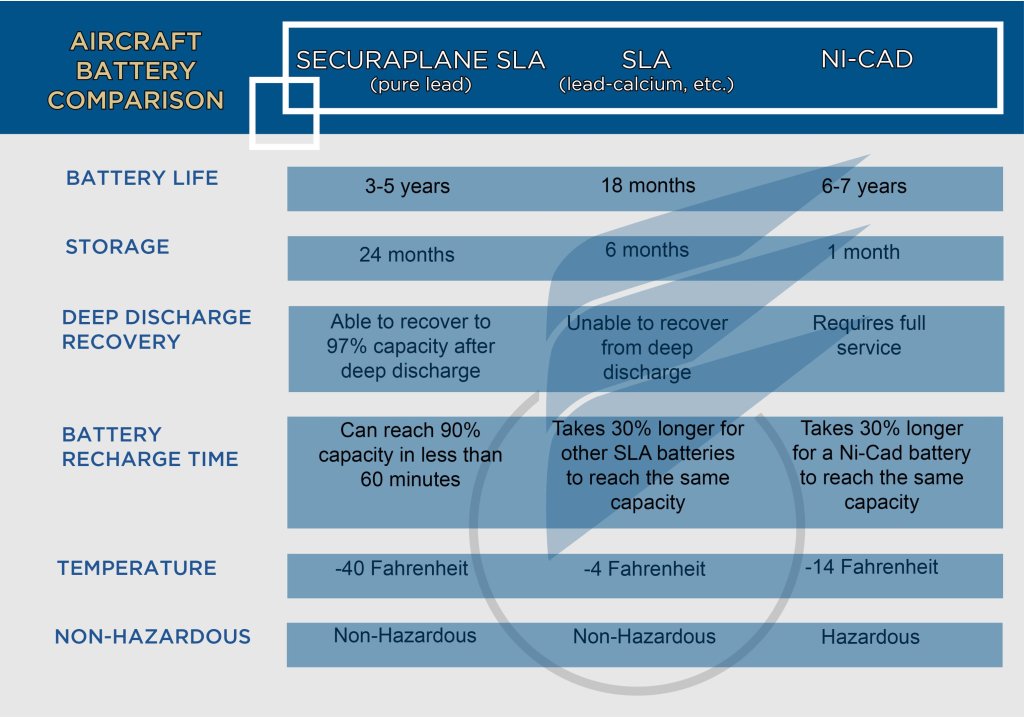
1. Extended SLA Battery Life
Securaplane’s pure lead SLA main ship battery can last 3 to 5 years under low maintenance conditions. Other SLA batteries last approximately 12 months.
Although the pure lead SLA battery is not as long-lasting as Ni-Cad batteries (which can last between 6 to 7 years, depending on application), SLA batteries have the added benefit of minimal maintenance and downtime during the battery’s life. Ni-Cad batteries, however, are maintenance intensive, requiring that the cells be changed every 6 to 12 months. SLA battery cells, in comparison, are changed every 18-30 months based on service life.
2. Ready for Installation
The Securaplane SLA battery is shipped fully charged and ready for installation. (If uninstalled, Securaplane SLA batteries can be stored for up to 24 months. Other SLA batteries can be stored for up to 6 months, and Ni-Cad batteries can be stored for only 1 month.)
Securaplane’s SLA battery can replace other SLA and Ni-Cad batteries with minimal modification.
Aircraft have two main ship batteries, which must be the same type. For instance, an SLA battery and a Ni-Cad battery cannot be installed as the aircraft’s two main ship batteries. (However, an APU battery could be a different type of battery than the avionics hold-up batteries.)
3. Minimal Maintenance
Unlike Ni-Cad and other SLA batteries that require frequent individual cell or battery replacement, the Securaplane SLA battery only requires reblocking once the battery drops below 80% capacity. Reblocking is when the cell block is replaced within the battery rather than replacing the entire battery unit. The unit is removed from the aircraft, and the cell block is removed and replaced before the battery is reinstalled on the aircraft. Maintenance and capacity checks are due every 12 to 18 months.
Instead of reblocking, the Ni-Cad and other SLA batteries must be completely replaced. Operators save, on average, $500 each time batteries are reblocked instead of replaced.
4. Deep Discharge Recovery
The Securaplane SLA battery can recover to 97% capacity after an inadvertent deep discharge. An inadvertent deep discharge is when a battery is discharged due to a switch or other load being left on accidentally.
The Securaplane SLA battery’s ability to recover from discharge is an advantage over other main ship batteries. Ni-Cad batteries require full service to recover from an accidental deep discharge. Other SLA batteries are unable to recover. (Note: the Securaplane SLA battery can only be recharged on wing.)
5. Quick Battery Recharge
Securaplane’s SLA battery can reach 90% capacity in less than 60 minutes after discharge. This is roughly 30% less time than required for Ni-Cad batteries for the same amount of available charge energy. SLA batteries and Ni-Cads must be removed from the aircraft and recharged in a shop. SLA batteries must be recharged slowly after an accidental discharge, taking considerably longer than Ni-Cad and the Securaplane SLA batteries. (Note: the amount of time for recharging an aircraft battery is dependent on how much charge current is available.)
Thermal runaway is possible in both Ni-Cad and other SLA batteries. Thermal runaway occurs when increasing temperature causes the batteries to produce more heat, potentially releasing dangerous gases or fire. Securaplane’s pure lead acid battery is immune to thermal runaway.
6. Temperature Performance
The Securaplane SLA battery has a hot and cold weather performance that exceeds competing products. While Ni-Cad batteries can function at -14℉ and other SLA batteries at -4℉, the Securaplane SLA battery has the lowest cold-weather performance limit for engine start at -40℉.
7. Non-Hazardous
Like other SLA batteries, the Securaplane battery is non-hazardous. The battery’s lead and plastic is 99% recyclable, making it a more environmentally friendly option.
Non-hazmat and non-spillable, the SLA battery can utilize ground and air shipment without restrictions, shortening delivery time and saving money. The pure lead battery must use secure packaging marked as a “non-spillable battery.”
Ni-Cad batteries contain hazardous material and may only be shipped via ground with the battery discharged.
8. Extended Warranty
Securaplane SLA batteries also have the longest warranty on the market. Securaplane offers a flat 24-month warranty while other SLA batteries are pro-rated after 6 months and 12 months of usage. Ni-Cad batteries typically only have a 30 to 90-day warranty.
Which Aircraft are Approved for Securaplane SLA Batteries?
Securaplane’s SLA main ship battery is PMA-approved and requires an STC for installation on various aircraft, including:
- Airbus A320 Series
- ATR 42 & 72
- Bombardier CL601, 601
- Caravan 208, 208B
- CRJ 100, 200, 700, 900
- Falcon 50
- Hawker HS 125 thru 900XP Series (including 750)
- Saab 340
- Pilatus PC12 Series
- And More!
How Much Do Securaplane SLA Batteries Cost?
Cost Savings
With the Securaplane SLA battery, operators can save thousands of dollars annually per aircraft in maintenance, storage, and shipping compared to other batteries.
Reblocking savings: $1,387 annually
Maintenance savings: $1,600 to $2,600 annually
Storage savings: $5,000+ annually
Shipping savings: $2,500 annually
Operators may expect additional significant cost savings on labor, trace (paperwork), operation, and upfront costs.
Upfront Costs
Securaplane’s SLA batteries range between $2,000 and $12,000, depending on the physical size of the battery, amp hour capacity, and reliability reblocking capabilities.
Comparable Ni-Cad batteries cost, on average, 2 to 3 times more than SLA batteries. Ni-Cad batteries also require 3 days of downtime whenever the battery requires maintenance.
Is the Securaplane SLA Battery the Right Choice for You?
Securaplane’s SLA main ship battery offers various benefits, such as being more cost-effective than Ni-Cad batteries with minimal maintenance and longer battery life than other SLA batteries. Ni-Cad batteries, however, are longer lasting, even though they are maintenance intensive.
Which battery you choose for your aircraft will depend on your operation, the type of aircraft, and whether your organization has stipulations regarding the kind of battery installed. Review your organization’s standards and discuss with your maintenance team which battery is the right choice for your operation.

